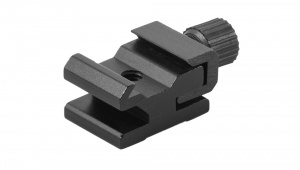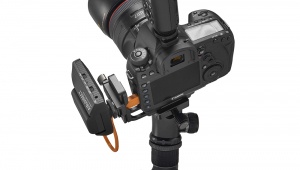I love to shoot tethered, and to be honest I strongly believe that if you run any kind of studio tethering should be something that is key for a good photoshoot.
The main advantage is of course that your client (and you) see the images on a big screen, this makes it much easier to show the results, check lighting details and of course focus.
Normally I shoot with an USB cable like probably most of you.
It’s very simple, connect to the camera, connect to the PC/Mac, start software and go….
Well it’s not that easy sometimes but in essence it is.
Now in the past I’ve tried several solutions that promised wireless tethering, and let’s set them next to other to start.
First we have the internal cards
You probably all have seen some of those in the past, and they are still being sold.
I can be very short about this solution, I’ve tried 3 different cards and they all ended up being returned.
yes it worked, kinda
Sometimes the connection was rock solid, to be very flacky the next day, and not working at all a week later. And it’s quite easy to understand why, especially after reading solution number 2.
Second we have the build in wifi
Most new cameras have some form of wifi build in, and also my Sony camera has this option.
Now in the case of Sony they actually have a really good solution (so far the best I’ve seen), it works great in our studio, solid connection up to let’s say 15 mtrs away from the tablet and images come in almost as fast as via USB. Now don’t be fooled by this remark…. when you shoot with the Sony software you can select to send over the RAW files which takes forever, or a preview JPG, this preview JPG is very lightweight and is 2MP, so this goes through the air pretty fast. One could say… why not use this Frank?
Yep, I understand that question.
Well first off, the solution was pretty basic a few years ago. You could only use it as an app that you started on the camera and the viewfinder and some other things didn’t work anymore, so you could use your phone or tablet as viewfinder or the LCD on the back of the camera, not a big thing but I like the viewfinder. Luckily in the modern Sony cameras we now have the wifi build in the real camera OS, so you don’t need to take any sacrifices in viewfinder or other settings. However….
This works like a charm in our studio.
When I test it in a hotel it works like a charm.
But I’ve actually only had 2-3 workshops where the solution really worked as it should, in all other situations the connection was very slow (20 seconds for 2MP raw), very unstable (sometimes 1 seconds sometimes 20 seconds) and in some situations I couldn’t even walk further away than 1 meter from my tablet.
The reason is pretty simple to explain.
The wifi signal uses 2.4GHZ and 5 GHZ, but both bands can be pretty busy and overcrowded, especially in event spaces or for example in a cellar with a lot of iron it’s not an ideal solution for a weak wifi signal. And that weak is key. When we look at what the camera transmits it’s of course a lot weaker than an external solution. Meaning it might work, but there is a huge risk that in other location it won’t. In all honesty it’s a risk I can’t take, and shouldn’t either.
Third we have the external solutions
This is where the fun starts.
Today we take a look at the brand new Tethertools Air direct.
I do have to say right from the start that Annewiek and I are the Dutch distibutors for Tethertools, but… that won’t hold me from being 100% honest in this review, so I’m not going to sugarcoat anything what I write down is something I stand 100% behind.
The first wireless solution from Tethertools was the case air, and although that one was working great for almost all cameras there was still that issue that haunts me… no Sony support. And you see this with a lot of devices or solutions that use tethering and as a Sony ambassador that drives me nuts, why not just give the SDK to manufacturers so they can make devices that don’t just work with Canon and Nikon, I just don’t get it. Yes we can tether in Capture One, but I also like to use Lightroom or smartshooter… and you guessed it… they support the files but no tethering, but ok let’s not get too much off topic.
The case air was awesome for people that needed a small, relatively fast and most of all easy to use wireless tethering solution.
But if you want something a bit more professional and supporting Sony… well now we have the Air Direct and it’s a pretty awesome solution that checks almost all the boxes.
Air direct
Let’s see what the air direct does in the boxes that I want it to work.
First off all, the Air direct makes tethering possible to the desktop for almost every camera including : Canon, Fuji, Nikon, Sony, Olympus, Panasonic LUMIX, Phase One, Hasselblad, Leica models with USB tether. It’s of course not designed for non-supported camera models in your software.

All devices (semi check)
One of the things that I find essential is that it should work with both mobile devices (Android and iOS) but also with the desktop on both Mac and PC, and that last one is a huge thing. On location I shoot mostly wireless to an iPad pro with a laptop as backup if the wifi doesn’t work but in the studio or when I want to also retouch images it’s important to also be able to shoot tethered to a desktop, and preferably to my own software.
Well the Air direct does it all, and with some cool tricks.
First of all when you use a Canon or Nikon you are able to use the Android/iOS app.
When you own a Sony… well not yet. But Tethertools confirmed that a Sony solution is coming on the Air Direct, so I’m pretty confident we will see that soon/semi soon.
And the mobile app does it “all”
As they say themselves:
“Go Mobile with Air Direct’s robust app for instant image visibility and intuitive camera controls. Change settings, set timelapse and Bracketing, Shutter Release, movie mode and more with Canon and Nikon”

All software (Check)
Oh this is so cool.
I’ve only seen one other device that can do this and it’s such a great solution that when you once used it you don’t want to be without.
On the PC/Mac you can install a small app called ADU, now if you don’t read the manual, you can download it from https://www.tethertools.com/adu
You just run this app in the background, connect to the wifi of the Air direct and after that you can start with your favorite software, do beware… that software should support your camera via USB, you still can’t shoot tethered into lightroom when the camera is not supported.
Software supported by ADU :
Phocus, Capture One, Smartshooter, Lightroom Helicon remote, Canon Eos utility, Nikon Camera control 2, AstroDSLR, Darkroom core
And probably a few more.
In essence the software just sees your camera as if it was connected via USB, pretty cool especially if you don’t want to change your workflow. Oh and don’t worry if your camera is not supported in Lightroom, as always you can use hotfolders in Lightroom and shoot tethered that way.

RAW and JPG or…. (check)
Well this is real biggy.
Sending over RAW files via Wifi is not my hobby, and I can already tell you that if you expect that to work fine…. well stop reading sorry buddy not going to happen soon.
RAW files are awesome but also very large and Wifi is just not able to send 10 RAW files over the air in 2 seconds like a USB cable can handle easily. That being said, when you shoot wireless there are other solution that work “great”. You see me using quotes and that’s because this is were you HAVE to make a sacrifice in your workflow (later more on how they could solve this a bit).
With the Air direct you can filter out the RAW files on the mobile app and send JPGs to the mobile device and leave the RAWs on the card.
On the desktop site we don’t have that option and you have to set this up in the camera.
On the Sony you can easily set it up to shoot RAW+JPG but only send the JPGs to the computer, a small disadvantage is that Sony only allows 2MP JPGs to be send over, unless you also want the RAWs there, which in this case we don’t want to. So we have the RAWs on the card and 2MP JPGS going through the air with a pretty fast speed, in fact it’s almost faster than my RAW files via the cable (nice). Disadvantage is of course that you have the RAWs on the card so if your client gives stars it’s on the desktop not on the RAWs, but that’s easy to fix.
First off all make sure all file names are on original if possible in your software.
Just give stars, ratings whatever.
Now import your RAW files next to the JPGs and sort on date/time, now you see your selects next to the RAWs, just select the RAWs and star them, now you can delete all the JPGs. Even if you can’t use the same names this method works like a charm unless you shoot a million images in burst mode and have to select 1000 I would not want to do that, but for a normal session with let’s say 200 images and 20 selects it’s easy peasy.
Connection to a router (Not yet)
When you are using wifi with a wireless solution it’s often a 1:1 connection (direct connection) this means that you sacrifice the wifi from your desktop or mobile device for the connection to the wifi transmitter on the camera. Now in most cases this is absolutely no problem. But in our specific case it did give me a challenge. We also use chromecasts in our studio for display on the big screen tv’s and well those are also on Wifi and you can’t connect to them via a wired PC in most cases if the wifi is in other subnet (like with us). Luckily the Chromecast Ultra also has a wired option, so in our case it was a matter of just using a network cable to the chromecast to make it connect to the wired subnet. Again in most cases this is not a real problem (also not for us). However…. when you are able to connect to a hotspot in your room/studio it does maximize your range, now we can get app 30mtrs away from the PC before the connection is lost, which is pretty good seeing that puts about 2 walls between me and the desktop, but I’m 100% sure that if we connect to our wifi network in the studio I would have 100% connection even when we walk around the studio outside. so that would be cool.
Our contact at Tethertools confirmed this is on the roadmap, so that’s pretty awesome.

Battery life (check, check double check)
Oh this is a problem.
Up till now if you want to shoot a whole day you better prepare for some frustrations or external battery solutions like a powerbank, and I hope for you that the USB input isn’t shared with the USB to the camera because than you also need a hub, and let’s be honest the camera is big enough right?
This is also something the Air Direct tackles beautifully, yep I’m getting excited.
Now this is something that a lot of people won’t get why I get so excited about this, but trust me you will.
The Air Direct uses standard Canon batteries as powersupply. In real life this means you can just switch batteries when it dies (charger is included) and Canon batteries can be bought for next to nothing if you are willing to go for third party brands. Now don’t worry about weight too much, normally you have the battery inside, now it’s outside so in weight it really doesn’t make a huge impact.
I can’t yet say how much the battery life is, but I did a complete workshop with the Air Direct and right at the end was the first time I saw the red light coming on, so that would mean app 5-6 hours. And what if you have to change batteries? well it’s a hot swappable solution so no downtime, just take the battery off and put a new one on without losing connection. And if you don’t want batteries or you use a fixed setup… no problem just use a powerbank or AC power.
Speed (check)
Well it’s never fast enough of course, but the Air direct has everything covered to be one of the fastest yet.
You can use both 2.4GHZ or 5GHZ (switch on the side to select)
The Air direct also has 2 very high powered antennas inside to make sure you have the most solid connection and therefore stable and fast transfer speeds. Again you are not going to be able to shoot RAW if you need it fast, however when you are shooting still life or products it might be that the transfer speed is more than enough for you, there are so many situations where speed is no real issue and in that case you can finally just send the RAWs over the air without waiting for ages.
Cables (check)
One of the biggest frustrations for me is often that when I buy something I want to work with it right away and often when you get the device you find out that your camera has a different connection than the delivered cable… aaaaaargh. Well the Air Direct has you covered, in the box are a few cables that will probably make 99% of the available cameras work right away. There is even a Phase One cable for sale (this one is extra).
Price (check)
Of course I’m Dutch so we always want it as cheap as possible.
Now the Air direct is not cheap, let’s get that out of the way.
But you do see check… so what’s the deal.
Well first of all this thing is a tank. It’s build to last.
Plus you have the external battery that is also supplied in the box, and that battery plus the charger plus all the cables all represent a value, and when I add this all together and look at the competition the price is actually pretty decent (even without all those extras) so Tethertools really made something interesting here.
Semi conclusion
Ok overall I think we checked my boxes, but seeing this is week 1 and a lot of stuff is still being worked on I called it Semi conclusion.
I strongly feel a Sony mobile app is a key element for a solution that I can support for the full 100% and seeing Tethertools confirmed it’s in the works I guess it will be here soon. And for now I use it on the desktop and laptop during workshops/demos. So don’t expect anymore cables on location.
For what it does at the moment I think when you’re a Canon or Nikon shooter you should absolutely check it out and get it.
For all other brands like Fuji, Sony etc. Your camera will work flawless on the desktop. You can tether like you normally are connected via a wire (only JPGs if you want to keep the same speed) and if you never use a mobile device to tether that’s it it’s awesome and fast. If you do want to be able to also use mobile devices (for me the iPad pro is very important) I would probably just wait a few weeks and see what’s going to happen, I don’t want to give you a “buy now” advise when I don’t have a working mobile Sony solution in my hands. As soon as we get a beta I will immediately update the review and social media. This is also why I’ll probably wait with the video review or do it in two parts. I really want to cover all bases.
For what it is now (one week after release) I can highly recommend the Air direct. It’s pretty unique in what it does and having that external battery is for me the main reason to choose the Air Direct over the competition PLUS the promised mobile app support for Sony that is.
Now when I posted some images online of how I mounted the Air Direct I immediately got some responses from people that claimed it was ugly, too big, etc. Well I have one very simple answer for that… make it smaller and it won’t work as well. All wireless solutions with specs like this are big (even slightly bigger and heavier than the Air direct). But let’s just get the elephant out of the room, yes it’s big (not ugly) and yes you need to mount it somewhere on your camera and although it does have a hotshoe mount it doesn’t have to be on the hotshoe. We opted for the bottom of the camera. So on top is my remote for the hensel strobes and on the bottom is my tetherblock (which I normally use for guiding my tethercable and mount my camera on a stand) on the tetherblock we use another Tethertools product called the AD-Arka but there are many other solutions that makes mounting the Air Direct pretty easy and just where you want it.
Think about the following options:

This is the Rapidmount coldshoe.

But the Rapidmount also works of course

This is the AD-Arca that I use
And finally of course you can also use a L-Bracket with the AD-Arca

So what can be better?
Well I close with this because this is not just Tethertools but for all wireless solutions.
- First off all make sure you can set the JPG filtering in the app. Now you’re bound to what your camera let’s you setup and with Capture One I can’t get the images nice full screen (I can in Lightroom) this is a limitation of capture one by the way not Sony or the Air direct, but it would be nice to be able to send for example small JPGs that are larger than 2MP to the desktop with the Sony cameras. If you do the filtering inside the app like on mobile devices it’s much easier and more flexible. It’s not a deal breaker at all, but it would be handy.
- Stars are often given by clients or models during the shoot, this means an image is marked as “awesome” and selected. It would be nice if those stars SOMEHOW are also transmitted to the camera, I have no clue if that would be possible but it would be nice.

Final thoughts
When I showed the Air direct online one of the most heard questions was “why?”
And don’t worry I get it.
Why would you spend 300+ for a device when you can tether perfectly including RAWs with a cable.
Well you are 100% right, can’t say anything else. Tethertools deliver a whole line of products that are aimed at wired tethering and it’s awesome, I’ve been using their products since the company was literally a two man outfit (man have they grown) and I have no issues with wired tethering at all, I’m a HUGE advocate for it. However……
There are many many situations where shooting wireless is just plain awesome
Let’s just only think about
working on location
When I teach a workshop on location I had to bring a laptop (plus external powerblock), 15 mtrs of tethering cables, meaning also a repeater and two extension locks to make sure I don’t get any dust or water in my connections. And of course we also need a jerkstopper on the laptop and one on the camera. Limit… 15mtrs and every time we move location we have to take everything with us. Plus 15mtrs cables with locks take up some room and weight (when flying). Switching to wireless means no more wires but also no more laptop (when iOS or Android is supported). In fact I’ve done quite some workshops and demos wireless already with different solutions and working with an ipad pro wireless in the field is just…. well it’s awesome it feels like going from 1980 to 2020. Battery life is no issue at all, brightness outside of the iPad pro is so bright it blows away my laptop, plus we don’t need a stand and tethertable for the laptop anymore, just a small stand for the iPad pro, or someone just holds it. It’s not connected anymore so you can drag it where ever you want without disturbing the shooter. Also it’s now possible to just move around without thinking about cables.
Working on tradeshows or demos
Often it’s a matter of 5 minutes between speakers so you have to setup and get ready in less than 5.
With cables it’s doable but it’s a bit of a hassle, with wireless just connect the ipad pro to the projector and… well that’s it in essence you’re done. No more stress.
Also no more worries that when you demo on a booth people stand on your cables and cables get damaged, meaning end of the show or replacements, and do that a few times and your Air direct is “free”
In your own studio
When people walk around in the studio there is chance (huge) that someone stands on the cable, you don’t realize it and before you know it the camera is on the floor (yep happend to me a few times). With wireless no more worries.
Final Final thoughts (for now)
Working wireless does limit yourself.
No RAW files. You have to empty the card later and match the stars (if you don’t do that during the session, no issues what so ever, just delete the JPGs and copy the RAWs and start selecting).
But that being said, working with a device like the Air Direct the limitations are kept at a bare minimum. The device is built like a tank, it’s super fast (for wifi) and it connects to the software you know and love. Plus you have the option for mobile apps.
I can only say “highly recommended”
Now get that Sony app working fast. 😀
Like this:
Like Loading...











You must be logged in to post a comment.